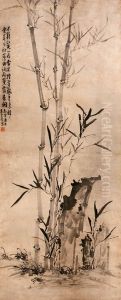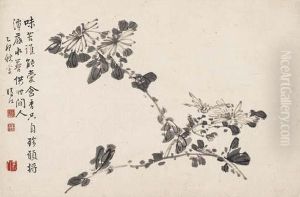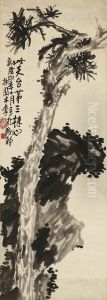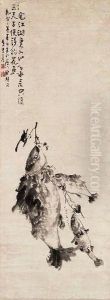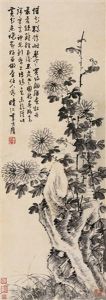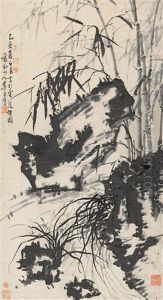Li Fangying Paintings
Li Fangying was a prominent Chinese painter, calligrapher, and poet during the Qing Dynasty, an era marked by significant cultural and artistic achievements. Born in 1696 in Yangzhou, a city with a rich cultural heritage and a thriving commercial center, Li was deeply influenced by the prosperous and vibrant environment of his hometown. His life spanned a period of considerable change in China, as the Qing Dynasty solidified its power and influence, integrating diverse cultural elements and fostering a unique artistic landscape.
Li Fangying's artistic journey is a reflection of his personal evolution and the broader cultural milieu of 18th-century China. He was not only a talented artist but also a scholar, deeply immersed in the study of Confucian classics, poetry, and historical texts, which informed his artistic expression and philosophical outlook. His artworks, particularly in painting and calligraphy, are celebrated for their elegance, refinement, and the integration of literary elements, showcasing his profound intellectual background and mastery of traditional Chinese artistic forms.
Throughout his career, Li Fangying navigated the tension between adhering to traditional Chinese artistic norms and expressing his individual creativity. His paintings often depicted landscapes, flowers, and birds, subjects that are emblematic of Chinese literati painting. Yet, his approach was distinctive, characterized by a personal style that melded classical techniques with innovative expressions, reflecting his belief in the importance of personal expression within the confines of tradition. This approach earned him acclaim among his contemporaries and a lasting legacy in the annals of Chinese art history.
Li Fangying's contributions extend beyond his paintings and calligraphy. Through his poetry and essays, he engaged with the intellectual and artistic debates of his time, advocating for a balanced approach to innovation and tradition. His works not only provide insight into the aesthetic preferences and philosophical debates of the Qing Dynasty but also serve as a bridge between the past and future generations of Chinese artists, influencing the development of Chinese art long after his death in 1755. Li Fangying remains a revered figure in Chinese art, symbolizing the enduring appeal of China's literati culture and its impact on the country's artistic heritage.
